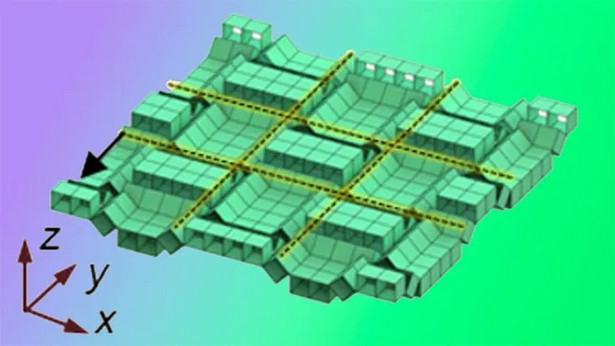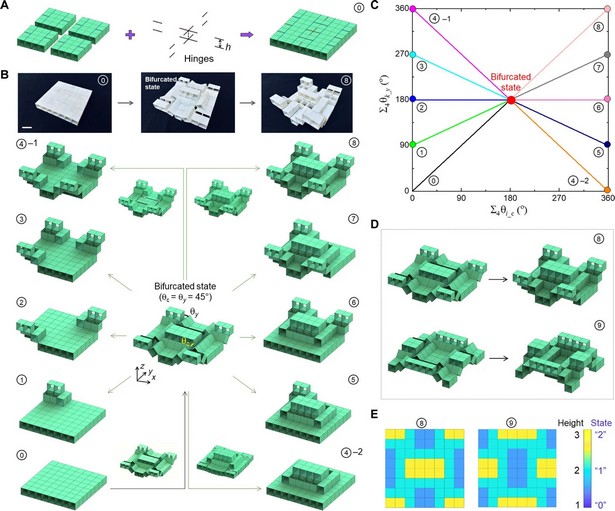In the United States, a mechanical Kirigami computer was created that does not require electricity
06.07.24
North Carolina State University researchers have developed a unique Kirigami computer that uses the principles of kirigami – the art of origami with cutouts – to create and manipulate 3D shapes. This fully mechanical computer works without the need for electricity.
The main characteristics and features of the Kirigami computer:
- Structure and Composition:
- The computer consists of 64 interconnected cubes, each measuring 1 cm in width and height.
- The cubes are arranged so that their geometry represents the data. Changing the position of the cubes (up or down) is carried out by manipulation, which changes the geometry of the connected cubes.
- Principle of work:
- Cubes are connected by elastic bands. When users change data, they pull on the edges of the cubes, stretching the elastic bands and moving the cubes.
- After changing the position of the cubes, they can be fixed, similar to saving a document.
- Extensibility and Complexity:
- One 64-cube computer can be used alone or in combination with other computers of the same type to increase the complexity and capacity of the data storage system.
- The Kirigami computer supports binary computing functions, but future development to a multi-state computer with five states (0, 1, 2, 3 or 4) is possible.
- Application and potential:
- A simple structure with nine functional units has more than 362,000 possible configurations, which emphasizes the high complexity and variability of the system.
- The computer is protected against vulnerabilities inherent in electronic computers, such as electromagnetic pulses and remote hacking.
- Since the device does not require electricity, it can be used in conditions where electricity is limited or unavailable.
- Possibilities and future:
- The goal of development is to create a stable mechanical system for data storage.
- In the future, such computers may be used for various tasks, including data encryption and tactile communication.
- If the research phase is successfully completed, the Kirigami computer can be used as a backup system for governments, banks and companies, increasing data security and protection against viruses and cyber attacks.

It is protected against vulnerabilities common to electronic computers, such as electromagnetic pulses (EMI) and remote hacking. This is because the device is completely mechanical and uses electrical components. In addition, in its current form it does not consume electricity.
If the Kirigami computer passes the successful research phase, it could replace modern electronic computers for certain tasks, such as data storage as a backup machine. This will be useful for governments, banks and companies, helping to fight computer viruses, theft and other vulnerable security systems.
Don't miss interesting news
Subscribe to our channels and read announcements of high-tech news, tes
Oppo A6 Pro smartphone review: ambitious

Creating new mid-range smartphones is no easy task. Manufacturers have to balance performance, camera capabilities, displays, and the overall cost impact of each component. How the new Oppo A6 Pro balances these factors is discussed in our review.
Editor’s Choice 2025. Best devices of the year by hi-tech.ua

The best gaming laptops, mice for work, gaming keyboards, smartphones, and wireless headphones of 2025. Among them, we will highlight the most interesting ones and those that we can recommend buying.
ASUS ROG release gaming monitor with 5K 180Hz and QHD 330Hz matrix Asus monitor
Asus ROG on the eve of CES 2026 introduced the ROG Strix XG27JCG gaming monitor, which received a dual operating mode and, according to the company, became the first in its class
iRobot has declared bankruptcy business
The American company iRobot, which once made robotic vacuum cleaners a mass product thanks to the Roomba line, has officially declared bankruptcy.


